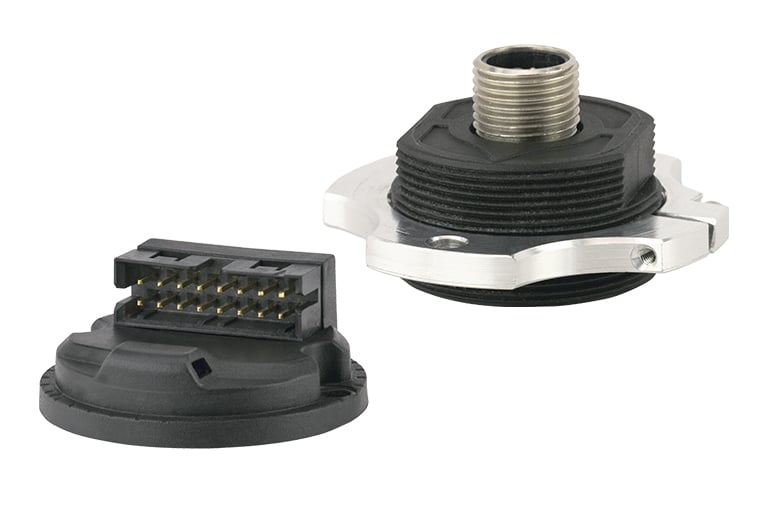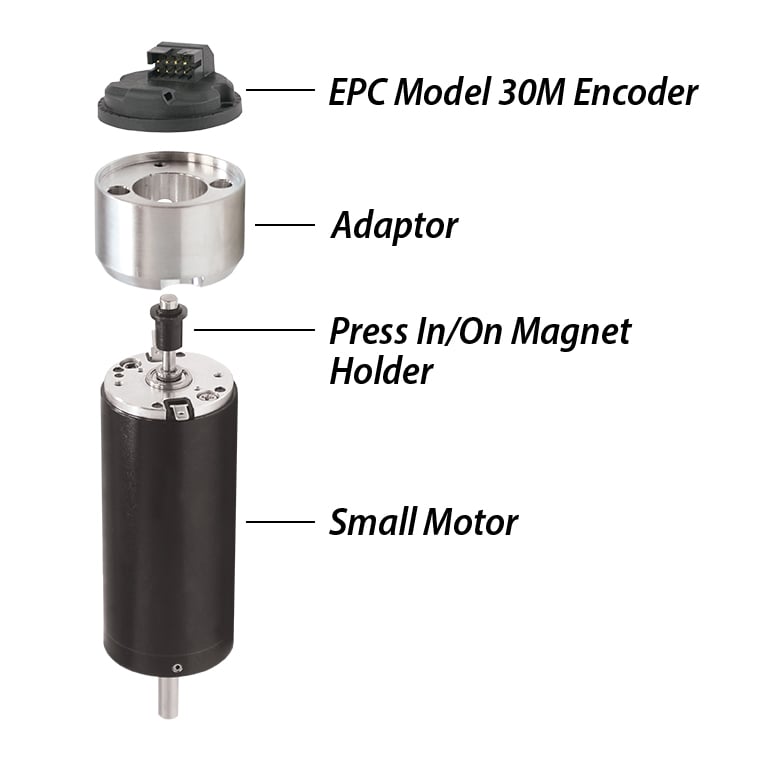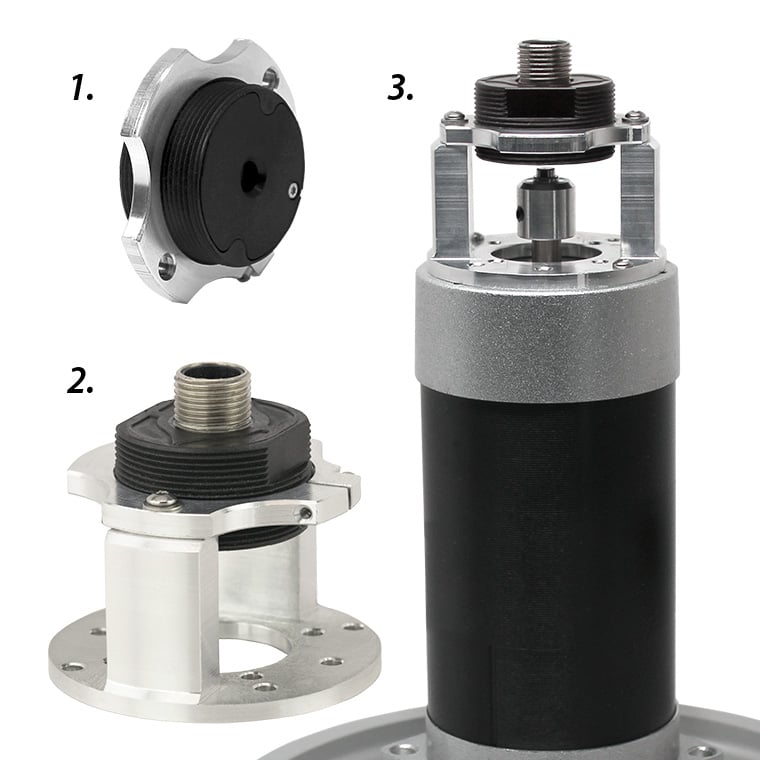Application Considerations
When considering a magnetic encoder module, there are four main points to consider.
1. The need for an encoder with a bearingless design
In the vast majority of applications, an encoder with bearings is the best choice because it provides an easier installation and a more stable platform for the encoder to run on. However, there are instances where a bearingless encoder is the better option:
- There are factors in the application that are hard on bearings. Magnetic encoder modules tend to be more tolerant to shock and vibration, which are factors that typically shorten bearing life. If an encoder will be subjected to factors that are hard on bearing life, a magnetic encoder module offers a bearingless solution.
- It is a high-speed application. An encoder’s bearings often limit operational speed to 12,000 RPMs or less. If the application requires higher speeds, a bearingless module might be the solution.
- Cost is a major factor. Since encoder modules have no bearings and associated support parts, they often cost far less than standard rotary encoders. Encoder modules often require more effort to install, however, and this effort may negate any up-front savings on the cost of the encoder.
2. Space is limited
There can be a variety of reasons why space is limited for an encoder. Occasionally, the encoder is overlooked in the design phase, and engineers suddenly find themselves with very little space for a key component in the configuration. Often the constraints of a machine’s design simply will not allow more space. In any case, magnetic encoder modules tend to be compact in size, but – when designed well – they will still provide accurate feedback and motion control.
Robotics is an excellent example of an application with limited space for a motion feedback device. Precise and exact feedback is required, but there is often not enough space for a traditional rotary encoder. That is when a space-saving encoder module can provide the necessary motion feedback without requiring adjustments to the overall size of the robot.
3. A heavy-duty seal is required on the encoder
Not all magnetic encoder modules offer heavy-duty sealing options. Verify the IP ratings on the seals offered on any unit under consideration. If the encoder will need protection from washdown, a sealing rating of IP50 is insufficient, and may require a sealing rating of IP69K. Conversely, if the encoder will be fairly well protected, it is not economical to pay for a higher IP-rated seal than the application requires. For more information on IP ratings and what they mean, refer to Technical Bulletin TB-106: Sealing Options for EPC Encoders.
4. Versatile mounting options are necessary
The “magnetic” in “magnetic encoder module” provides some options that may not be available with typical encoders. Even with the tolerance for a large air gap and tolerance for misalignment, you may still have a tricky installation that requires a creative solution. Many magnetic encoder modules offer various mounting options. The examples in Figures 2 and 3 demonstrate different mounting options, including an encoder with a threaded housing.





